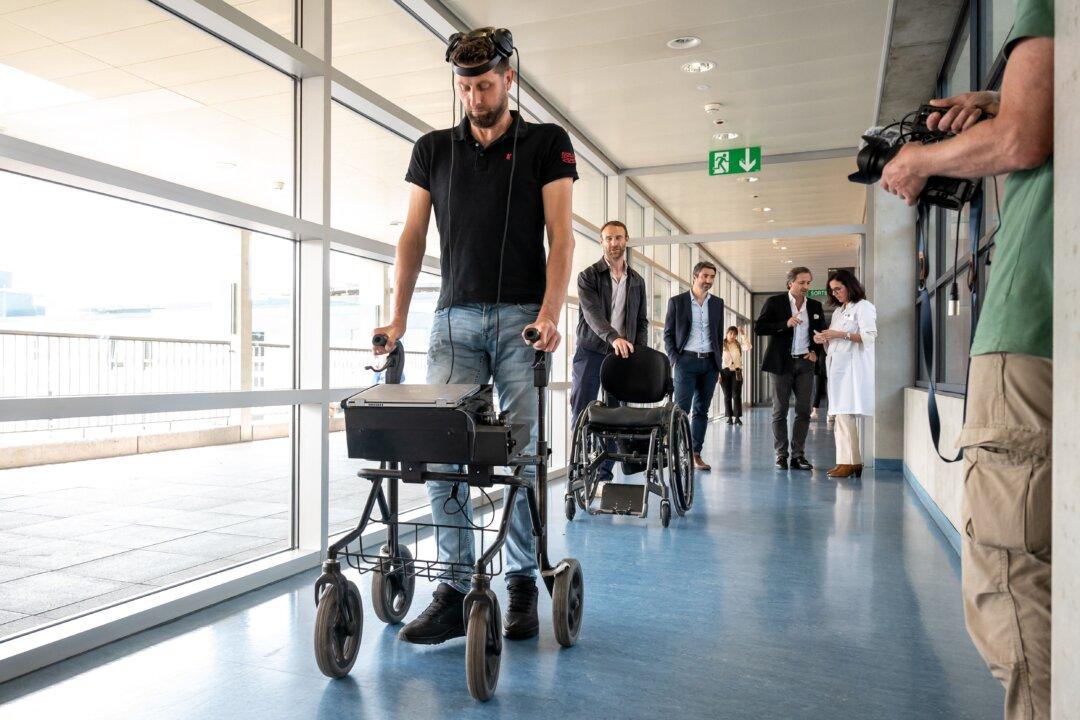A paralyzed man has been able to walk again for the first time in years simply by using the power of his mind thanks to implants fitted in his brain and spinal cord.
Gert-Jan Oskam, a 40-year-old Dutchman, was paralyzed in his legs and partially paralyzed in his arms following a cycling accident 12 years ago during which he suffered spinal cord damage.





